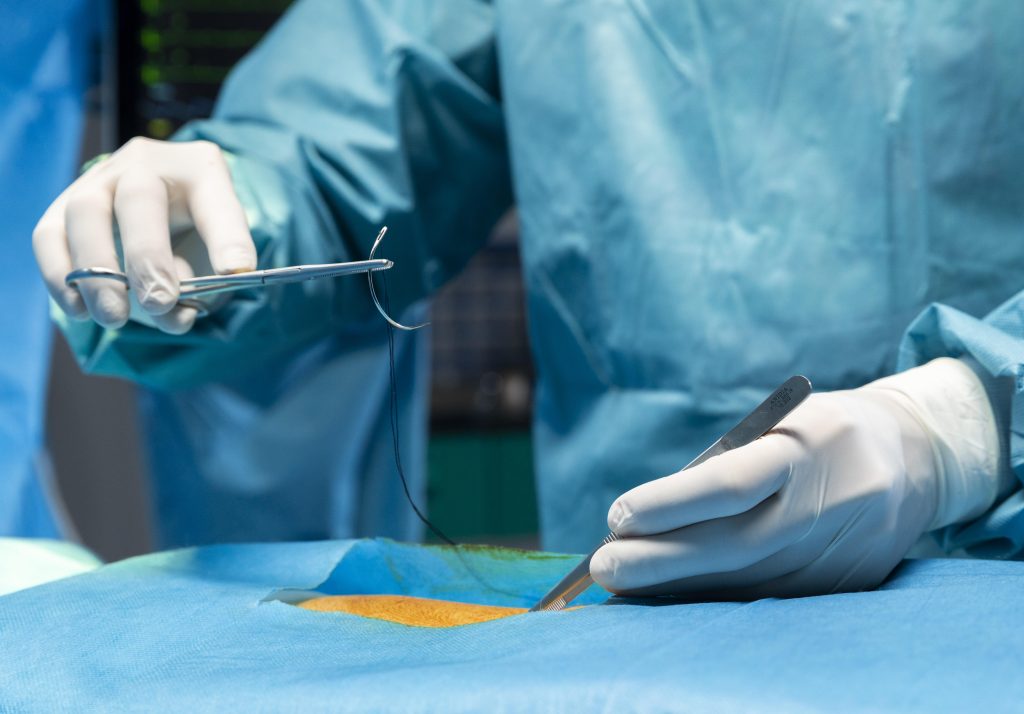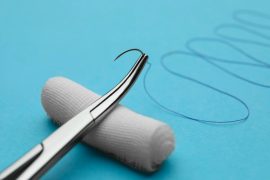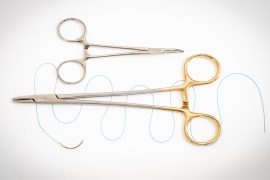Introduction
Any bodily abnormality may be genetic or caused due to injury, infection, exposure to radiation, or any reason that would affect a person’s appearance and, eventually, one’s self-esteem and sense of worthiness. As a medical specialty, plastic surgery covers a range of procedures that aim to improve a person’s appearance, repair and reconstruct bodily abnormalities and restore normal functions. Plastic surgery is a broad surgical field with two main areas: reconstructive surgery and cosmetic surgery. These surgeries often involve making incisions on the skin, which requires the use of sutures to close the wound and promote proper healing. Sutures are used to bring the edges of the skin together and hold them in place while the body naturally repairs itself. Various types of sutures are used in plastic and cosmetic surgeries, each with unique properties and benefits. Understanding the differences between these sutures is crucial for surgeons to choose the appropriate type for each patient and to achieve the best aesthetic outcome.
This article will discuss some of the most commonly used sutures in plastic and cosmetic surgeries and their advantages.
What is Cosmetic Surgery?
Surgery that focuses on improving and enhancing a person’s physical appearance is known as cosmetic surgery. Cosmetic surgery is performed on people who are otherwise healthy and want to improve or enhance their appearance for personal, aesthetic reasons.
The face, breasts, abdomen, arms, and legs are just a few of the body parts that might undergo cosmetic surgery. Breast augmentation, liposuction, rhinoplasty, facelifts, and stomach tucks are a few of the most popular cosmetic surgery operations.
Each patient’s personal goals and preferences are considered during the highly individualised cosmetic surgery procedure. Patients typically speak with the surgeon before a cosmetic operation to go over their expectations, goals, and any possible issues. The surgeon will then evaluate the patient’s health and suggest the best course of action.
Cosmetic surgery entails risks and potential problems, just like any other form. To pick a trained and experienced surgeon who can carry out the treatment safely and successfully, patients should carefully weigh the risks and benefits of the procedure.
What is Reconstructive Surgery?
Reconstructive surgery is performed to repair the abnormality of the person’s body part. This type of surgery mainly aims to treat any such abnormality, whether caused by birth or due to injury, disease, age, or any other reason and restore the normal appearance and function of such body parts.
The discipline of plastic surgery is intricate and complex, requiring a lot of training and specific knowledge. Plastic surgeons must thoroughly understand anatomy, wound healing, and several surgical procedures. There are many various kinds of plastic surgery operations, such as liposuction, facelifts, rhinoplasty, and breast augmentation. Every procedure is carried out with the utmost care and precision and customized to the specific patient’s demands and goals.
It is important to remember that cosmetic and plastic surgery is different. Despite their frequent confusion, reconstructive and cosmetic operations are included in the broader field of plastic surgery. While cosmetic surgery seeks to improve the appearance of a generally healthy person, reconstructive surgery aims to restore function and normal appearance following an injury or sickness.
Plastic surgery’s main aim is the reconstruction of facial and bodily defects and, by nature, is reconstructive.
What are commonly used sutures in plastic and cosmetic surgery?
An ideal suture must cause the least injury to the tissue and skin, the least tissue reaction, one that is easy to handle, has high tensile strength, provides proper knot security, and can be used in any tissue. However, factors such as the wound type, infection risk, the healing time required, suture properties, patient’s skin type, age, and genetic history decide the selection of sutures in plastic and cosmetic surgery.
Every single plastic and cosmetic surgery procedure has its own set of sutures, depending on the operation and the result expected from the surgery.
Titanium Sutures
Titanium suture is made of titanium alloy wire. It is strong yet has a low rate of infection. It is used alongside other less invasive sutures, like polyglactic catgut or polyglycolic acid. It is non-absorbable, which means they are not absorbed by the body. These sutures do not leave scars, so they are ideal for many cosmetic procedures like face lifts, augmentation surgeries, tummy tucks, and hair transplants. However, it is not recommended for liposuction procedures.
Chromic Catgut Sutures
Of all the sutures commonly used in plastic or cosmetic surgery procedures, chromic catgut suture is the strongest, made of natural fibre. It is highly absorbable, which is ideal for reconstructive surgeries. It can be used in many body parts like the face, hands, feet, and joints. It is flexible and pliable with high tensile strength, which makes it perfect for procedures like hand revisions, joint revision surgeries, and facial surgeries like brow lifts and facelifts. Chromic catgut sutures are available in both natural and black colours. The natural variety is more suitable for lighter skin tones, while the black one is ideal for darker skin tones.
Polyglactin Sutures
The most popular alternative for general soft tissue approximation is the Polyglactin Suture, made of a synthetic braid and suitable for treating wounds on the hands and face. This suture is also utilised during vascular anastomosis procedures, just like the Poliglecaprone suture. In contrast to catgut sutures, polyglactin sutures have a more predictable absorption level and usually cause a modest tissue reaction for the duration of the absorption process. Moreover, there is little to no tissue reactivity to this suture.
Monofilament suture: nylon and prolene
These sutures are made from synthetic fibre and are non-absorbable and strong. They are used for reconstructive surgeries like hand and foot surgeries, shoulder repairs, and facial procedures like brow lifts, blepharoplasties, and jawline revisions. Monofilament sutures are available in various colours, like green, blue, and red. Moreover, they are suitable for all skin types, making them an ideal choice for cosmetic surgery.
Metallic threads: silver, gold, and platinum
These threads are metal and ideal for ear tuck surgeries and nose reshaping. However, they are not suitable for liposuction procedures. They are the most expensive sutures and must be cared for carefully by the surgeon.
Silk Fibre Suture: Cohesive and Non-cohesive
Silk fibre sutures are made from the filament of a silkworm. They are an ideal option for cosmetic surgeries like facelifts and laser resurfacing. They are also suitable for reconstructive surgeries like hand reconstruction and joint replacement. They can be used in a variety of body parts like hands, feet, face, ears, and lips.
Short bowstring sutures
In this suture, a short string made of silk is tied around the base of the needle. The needle is then inserted into the body part, which makes this suture quite similar to a monofilament suture. However, it is available in a shorter length of 5mm compared to the 9mm of a monofilament suture. It is strong, flexible, and pliable, which makes it an ideal option for cosmetic surgeries such as eyelid surgery, facelifts, blepharoplasties, and body contouring surgeries.
Bottomline
There is no denying that plastic and cosmetic surgeries can change your life for the better. If you are thinking of getting one done, make sure you research thoroughly and find a qualified surgeon. Many types of sutures are used in plastic and cosmetic surgeries, each with advantages and disadvantages.





Comments are closed.